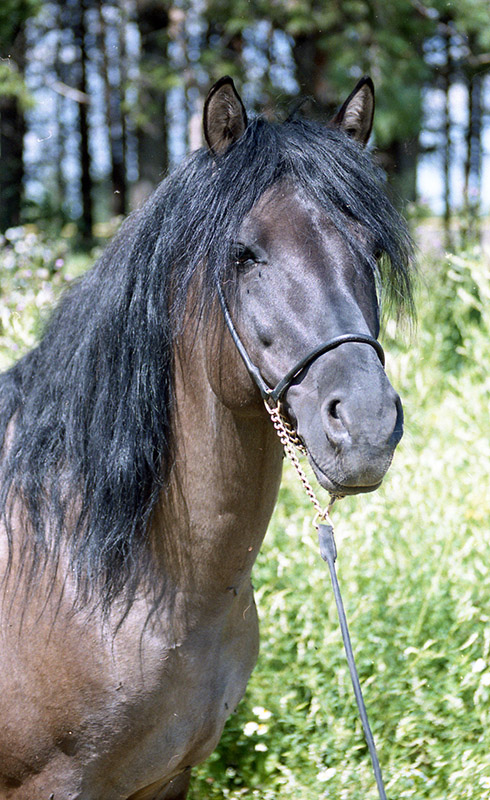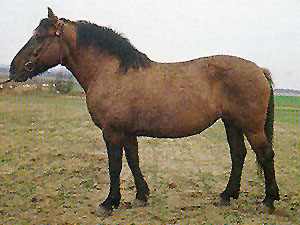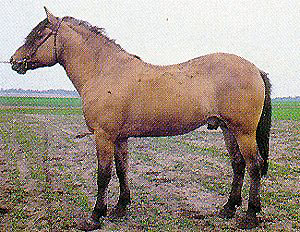Vyatka Horses
 Also Known By: Vyatskata
Also Known By: Vyatskata
The Vyatka belongs to the North Russian Pony group. Its development was strongly influenced by the natural conditions in the territories of what are now Kriov and western Perm regions and in Udmurtia.
The Vyatka's formation was at different times influenced by native Estonian horses brought by Novgorod colonists in the 14th century and by edicts from the state horse breeders during the reign of Peter the Great. Subsequently, Estonian horses were imported during the development of the mining industry in the Urals. The valuable features of the Vyatka included good draft ability, such as sufficient speed, extraordinary endurance and good fodder utilization. It was often exported beyond the limits of the Vyatka province. By the first half of the 19th century it became the best troika horse in Russia.

The Vyatka's features are a clean-cut head, a wide forehead and broad jaws. The neck is short and fleshy, often well-arched; the withers are average in size; the back is broad, long and sometimes slightly dipped at the withers; the croup is wide and on the short side; the trunk is wide and deep; the legs are short and solid and have good hoofs; the hind legs are often sickle-hocked. The forelock, mane and tail are thick and long. A characteristic feature of the breed is its chestnut-roan or bay-roan color with black stripe along the spine and wing-shaped pattern over the shoulders, as well as zebra stripes on the forelegs. However, the color can also be brown, bay, chestnut or rarely, black. The average measurements (in cm) of modern Vyatka mares are: height at withers 140, oblique body length 150, chest girth 172, and cannon bone girth 18.9. The live weight is 400 kg.
With the development of industry and transportation and with the intensification of agriculture, the numbers of the Vyaka were sharply reduced; most of the purebred mares were mated with heavy draughters and trotters. The 1980 horse breeding survey in Udmurtia and the Kirov region showed that the total number of horses classified as Vyatka was about 2000. No stud breeds the Vyatka. The breed needs protection.

In the long term, the breed could become quite competitive due to the development of tourism. As draught horses, the crosses of the Vyatka and heavy draughters are quite strong, have good fodder utilization and practically no reaction to midges and blood-sucking insects.
References
Dmitriez, N.G. and Ernst, L.K. (1989) Animal Genetic Resources of the USSR. Animal Production and Health Paper Publ. by FAO, Rome, 517 pp.
Mason, I.L. 1996. A World Dictionary of Livestock Breeds, Types and Varieties. Fourth Edition. C.A.B International. 273 pp.
